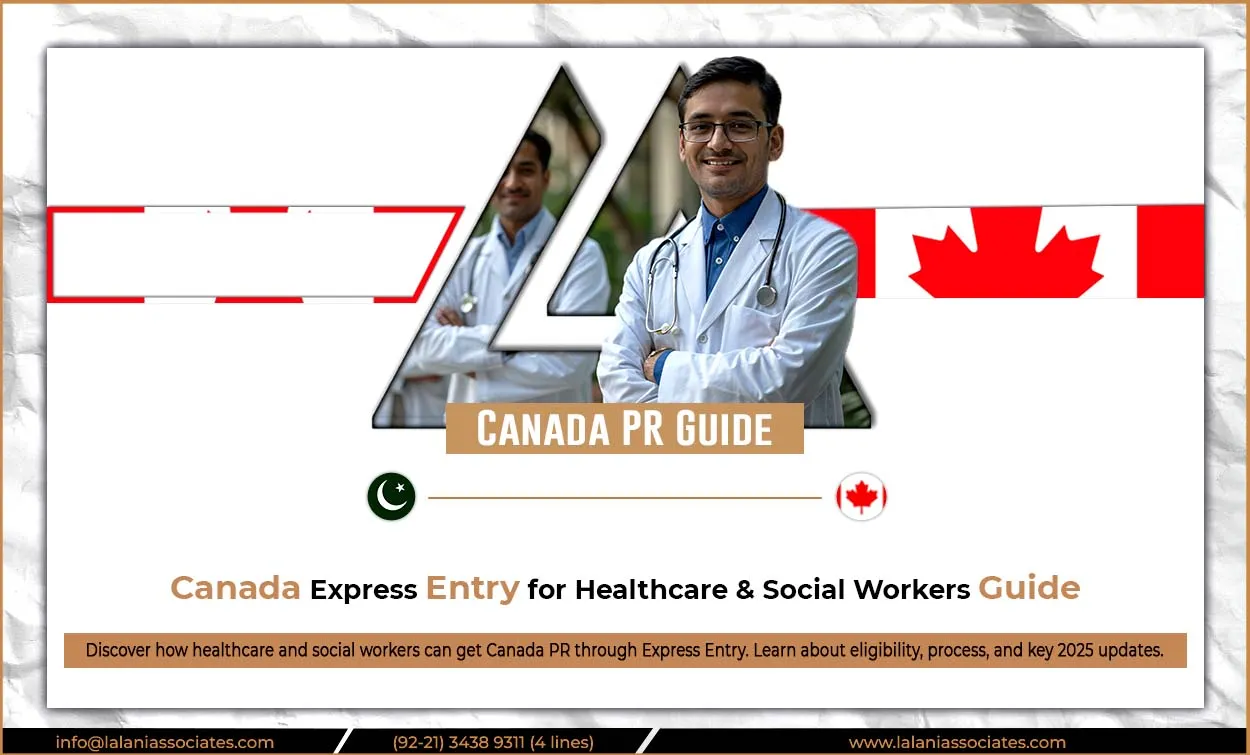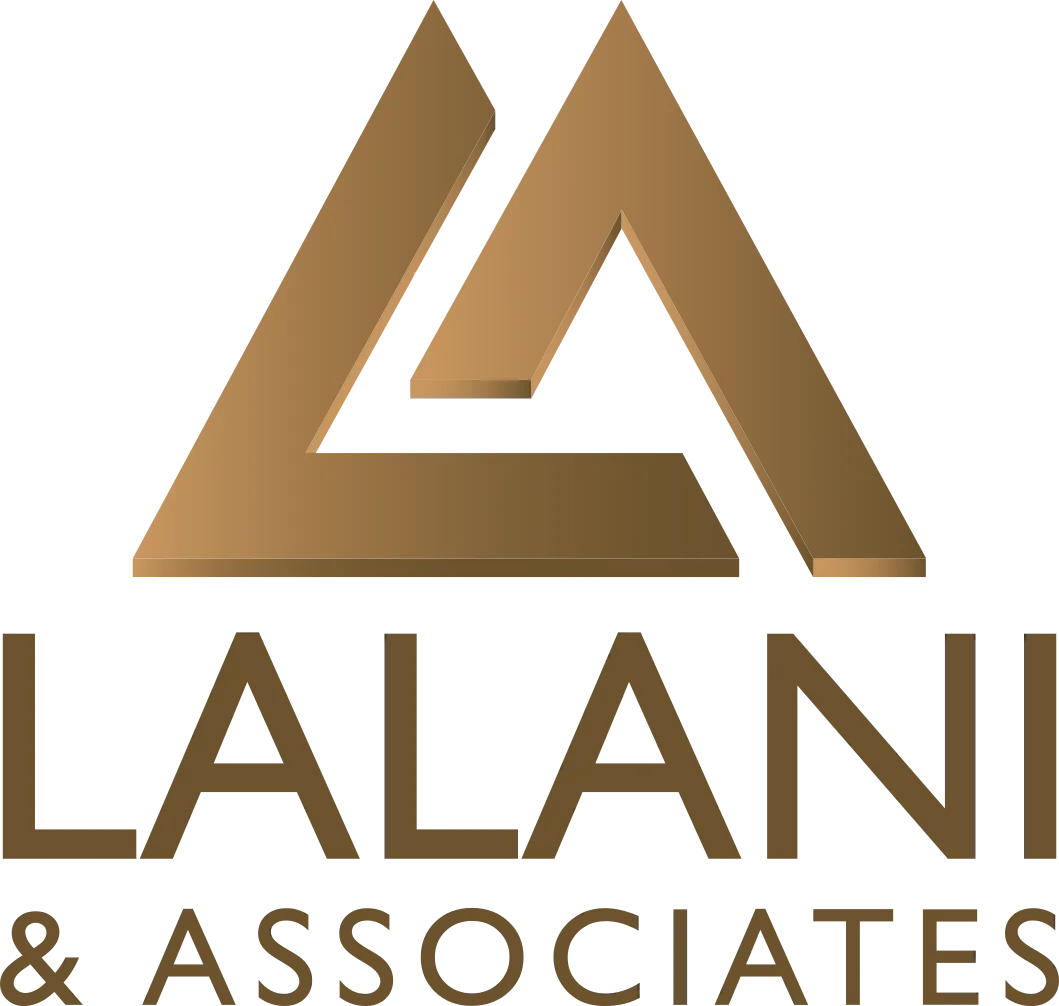
Do you want to work in Canada's healthcare or social services sector? You are not alone. Canada is now looking for skilled people like you to help with its developing healthcare system and fill critical job openings. What's good news? The Express Entry system, especially the category-based selection draws, has made it easier for people who work in healthcare and social services to gain permanent residency.
This tutorial explains everything in simple terms, including how it all works, which jobs are targeted, and what you need to do to qualify. You'll also learn about the latest changes to Express Entry, PNP possibilities, and how to improve your chances of success in 2025.
Why Canada Needs Healthcare and Social Service Workers
Canada's healthcare system has never needed more skilled workers than it does now. Because more than 20% of Canada's population is over 65, the country needs additional nurses, doctors, therapists, social workers, and care aides.
The COVID-19 pandemic also demonstrated that hospitals and other community services didn't have enough staff. Because of this, the Canadian government put healthcare workers at the top of the list of persons it wanted to invite to Canada through its Express Entry category-based lottery.
In summary, there is a lot of need for your skills, and the Canadian government is making it easier than ever for professionals like you to migrate there for good.
What Is Express Entry and How It Works
For skilled workers, Express Entry is Canada's main immigration method. It handles applications for three important federal programs:
• Federal Skilled Worker Program (FSWP) – for skilled workers with foreign work experience.
• Canadian Experience Class (CEC) – for those who have at least one year of skilled work experience in Canada.
• Federal Skilled Trades Program (FSTP) – for individuals in specific trades and technical jobs.
When you fill out an Express Entry profile, you get a Comprehensive Ranking System (CRS) score based on your age, education, work experience, and language skills. You are more likely to acquire an Invitation to Apply (ITA) for permanent residency if your CRS score is high.
Understanding Category-Based Selection Draws
In 2023, Canada started employing category-based selection draws to locate people with certain skills and knowledge. These draws are for jobs that are in great demand, such healthcare, STEM, agriculture, transportation, and being able to speak French.
If you work in healthcare or social services, you might still be able to acquire an ITA even if your CRS score is lower than the minimum for a general draw. This gives healthcare workers an advantage in the immigration process.
Why Healthcare and Social Services Are a Priority in 2025
Therapists, pharmacy technicians, and social and community service professionals are now part of the healthcare field, along with doctors and nurses. This change, which will come in early 2025, understands that healthcare isn't only about hospitals. It's also about mental health, community welfare, and social support networks.
In short, Canada wants a better and more open healthcare system, and that starts with people like you who are good at what they do.
Eligibility Criteria for Healthcare Express Entry
To qualify for the healthcare-related category under Express Entry, you must meet these requirements:
1. Minimum Work Experience (6 Months Rule)
In the last three years, you must have worked full-time (or the part-time equivalent) in one of the eligible healthcare or social service jobs for at least six months.
Your experience can come from Canada or another country, as long as it fits the official National Occupational Classification (NOC) job description.
2. Language Requirements
You must take an approved English or French language test:
• IELTS General Training (English)
• CELPIP General (English)
• TEF Canada / TCF Canada (French)
Aim for CLB 7 or higher to boost your CRS score and improve eligibility for most healthcare roles.
3. Educational Requirements
You need to get an Educational Credential Assessment (ECA) if you got your education outside of Canada to make sure it is the same as a Canadian qualification.
This assessment can be given by certain groups, such as WES or IQAS.
4. PNP Additional Requirement (Minimum 1 Year Experience)
Most provinces demand at least one year of full-time job experience in your area if you are applying through a Provincial Nominee Program (PNP).
A PNP nomination gives you 600 CRS points, which almost guarantees you an ITA for PR.
List of Targeted Healthcare and Social Service Occupations
Here are some of the top in-demand healthcare and social service occupations under Canada’s 2025 category-based draws:
TEER 1 (University Degree Required)
• General practitioners and family physicians (31102)
• Dentists (31110)
• Pharmacists (31120)
• Psychologists (31200)
• Registered nurses and nurse practitioners (31301–31302)
• Social workers (41300)
• Therapists in counseling (41301)
TEER 2 (College Diploma or Equivalent)
• Licensed practical nurses (32101)
• Paramedical occupations (32102)
• Pharmacy technicians (32124)
• Medical laboratory technologists (32120)
• Dental hygienists (32111)
• Community service workers (42201)
TEER 3 (Less Than 2 Years College or On-the-Job Training)
• Nurse aides and patient service associates (33102)
• Pharmacy assistants (33103)
• Medical laboratory assistants (33101)
Average Salaries for Healthcare Jobs in Canada
Your skills won’t just be in demand; they’ll also be well-rewarded. Here are some average annual salaries in CAD (approximate):
| Occupation | Average Annual Salary |
|---|---|
| Registered Nurse | $87,900 |
| Pharmacist | $110,000 |
| Family Physician | $284,000 |
| Physiotherapist | $86,800 |
| Psychologist | $102,000 |
| Dental Hygienist | $82,000 |
| Licensed Practical Nurse | $52,000 |
| Social Worker | $75,000 |
| Community Service Worker | $60,000 |
Salaries vary by province and city; urban centers like Toronto and Vancouver pay more but have higher living costs.
Express Entry vs PNP: Which Pathway Is Better?
Both Express Entry and PNP (Provincial Nominee Program) lead to Canadian PR, but they work differently:
| Feature | Express Entry | Provincial Nominee Program (PNP) |
|---|---|---|
| Selection | Based on the CRS score and category draws | Based on specific provincial labor needs |
| Work Experience | Minimum 6 months (category-based) | Minimum 1 year in a relevant occupation |
| CRS Boost | Standard | +600 points with nomination |
| Processing Time | 6–8 months | 8–12 months (average) |
If your CRS score is low, applying through a PNP stream is often the fastest route to Canadian PR.
Recent Express Entry Draw Trends (2023–2025)
Recent data shows that healthcare draws fluctuate but remain consistent in frequency.
| Date | Invitations Issued | CRS Cut-Off |
|---|---|---|
| June 28, 2023 | 500 | 476 |
| Oct 26, 2023 | 3,600 | 431 |
| Feb 14, 2024 | 3,500 | 422 |
| Nov 20, 2024 | 3,000 | 463 |
| May 2, 2025 | 500 | 510 |
Insight:
The May 2025 draw has the highest CRS cut-off (510) for jobs in healthcare. Still, smaller draws with lower scores happen all the time, so it's best to stay in the pool and keep improving your profile.
How to Raise Your CRS Score
Here are practical ways to boost your chances:
• Retake your language test – improving from CLB 7 to 9 can add up to 50 points.
• Add your spouse’s credentials – if applicable, their education and language results can boost your total.
• Get a provincial nomination – +600 CRS points.
• Add more work experience – longer, consistent work adds value.
• Earn an additional qualification – higher education levels = more points.
The Long-Term Demand for Healthcare Workers
The Immigration Levels Plan for Canada (2025–2027) puts healthcare at the top of its list of priorities. Almost 62% of new PRs will come from the economy, mainly in healthcare and social services.
The need isn't only for a short time; it's for a long time because of ongoing shortages and an aging population.
How to Apply for Express Entry in Steps
At Lalani & Associates, we manage the entire Express Entry process for you from eligibility check to final PR submission.
1. Check eligibility under FSWP, CEC, or FSTP.
2. Identify your NOC code correctly.
3. Guide for IELTS/CELPIP/TEF language tests.
4. Assist in ECA for foreign education.
5. Create and manage your Express Entry profile.
6. Improve your CRS score with expert advice.
7. Handle your ITA and PR application submission.
✅ Lalani & Associates ensures a smooth, accurate, and successful application process for your Canada PR.
Things to Stay Away From
• Choosing the wrong NOC code (it has to match your work duties, not your title).
• Not taking advantage of chances to enhance language.
• Not meeting deadlines or uploading documents that aren't complete.
• Not seeing PNP choices that could speed up your PR.
When to Get Help from a Professional
If your case has a complicated employment history, more than one NOC, or low CRS ratings, you should talk to a licensed lawyer or immigration adviser who is licensed. They can help you figure out how to make yourself more eligible or how to apply through a PNP with greater odds.
Final thoughts
Canadian immigration options for healthcare and social services are rising significantly. The Express Entry category-based lotteries and PNP alternatives give skilled workers a lot of chances to build a great future in Canada.
If you're ready to leave, make sure your papers are in order, verify your NOC, and work on your CRS score. Now is the moment to act because Canada needs your skills.
Frequently Asked Questions
Q1: How much work experience do I need for Healthcare Express Entry?
You must have worked in the same healthcare or social service job for at least six months in a row in the last three years.
Q2: Do I need 1 year of experience for PNP programs?
Yes. Most Provincial Nominee Programs (PNPs) want you to have at least one year of full-time work experience in a job that is appropriate.
Q3: Is a job offer required for healthcare category-based draws?
No. For healthcare jobs, you don't need a job offer to enter a category-based draw.
Q4: How often does Canada hold healthcare draws?
Healthcare drawings happen every 1 to 3 months, depending on how many workers are needed.
Q5: Can foreign experience count toward eligibility?
Yes, international job experience counts as long as it fits the NOC description and obligations.


0 Comments